Welcome to the Computational Mechanics Group Web Page
The computational mechanics group at ASU is in the
School for Engineering of Matter, Transport and Energy
at Arizona State University.
Multiscale polymer analysis
The focus of this research is to develop novel coarse-graining methods that enable mechanics of polymers to be simulated across a far broader range of length and time scalse than is currently possible with molecular dynamics simulations.
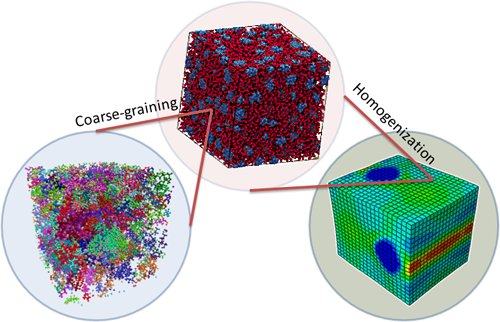
Multiscale models of polyurea spanning molecular dynamics simulations, coarse-grained molecular dynamics, and micromechanics of polyurea composites (fibers and inclusions).
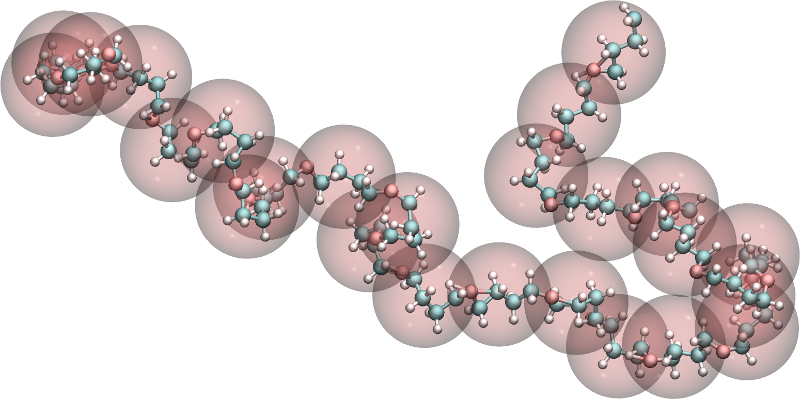
Coarse-grained molecular mapping of polyurea soft chain segments.
Tensile deformation of semicrystalline polyethylene, using model the published here 10.1016/j.polymer.2019.04.039
Extended Finite Element Methods (XFEM)
We are working to develop new finite element methods to model highly inhomogeneous materials in order to study the effect of material microstructure on properties such as strength, toughness, and dynamic performance such as shock absorption.
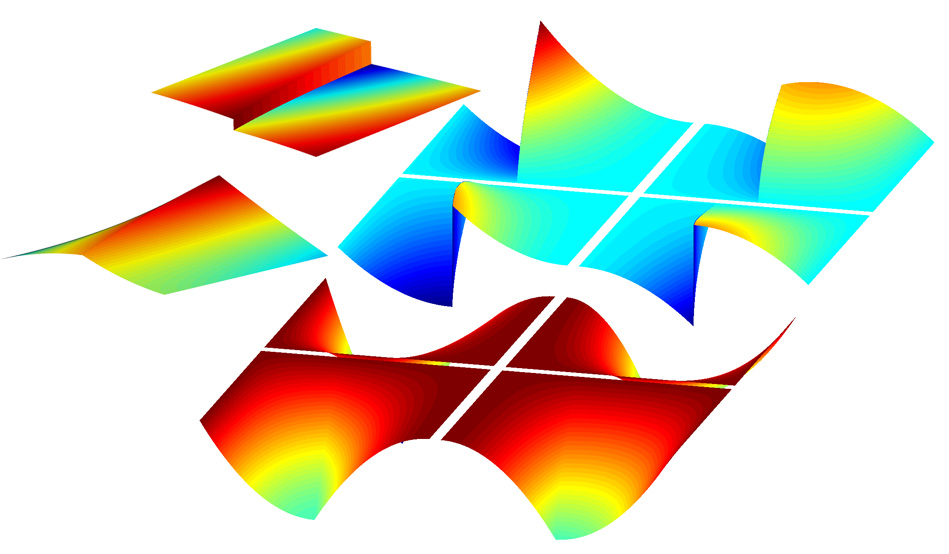 |
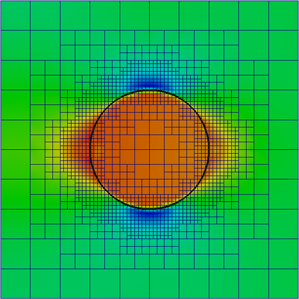 |
| Enrichment functions for strong and weak discontinuities |
Stress field around an inclusion with a refined mesh. |
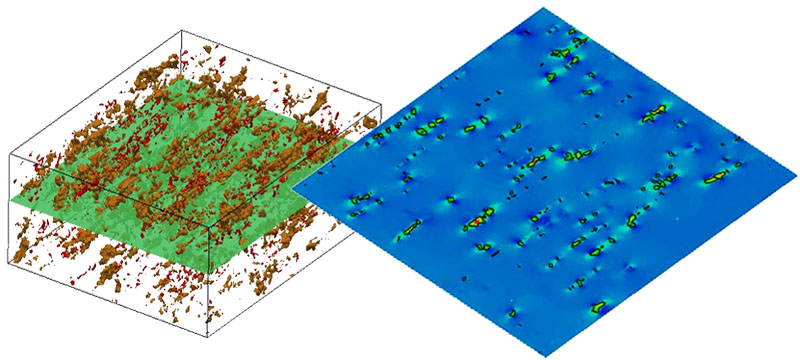
|
|
| 3D XFEM model of stress concentrations near particle inclusions in an aluminum alloy. | |
XFEM Modeling of dislocations in complex materials
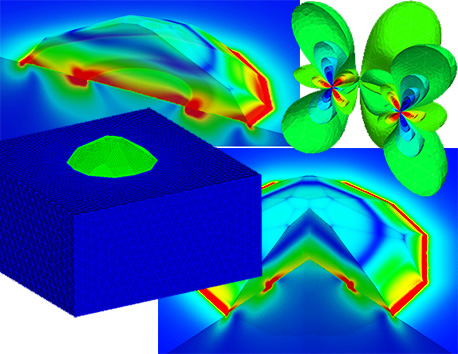
Examples of dislocation models: (clockwise from top right) stress contours around a dislocation loop, stress magnitude in a quantum dot, quantum dot geometry, energy density of a quantum dot.
Multiscale methods and simulation
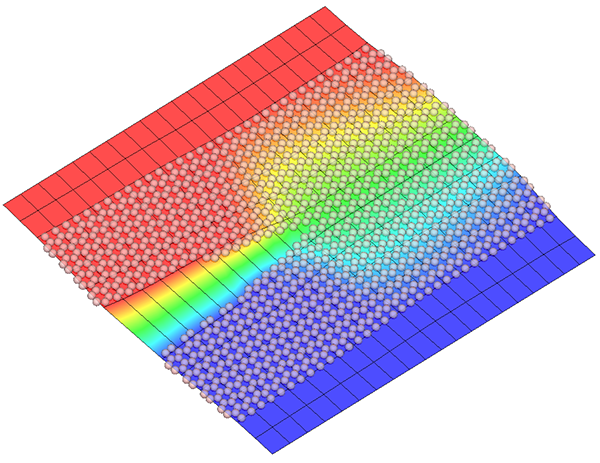
Coupled atomistic-to-continuum simulation of a crack in a graphene sheet.
